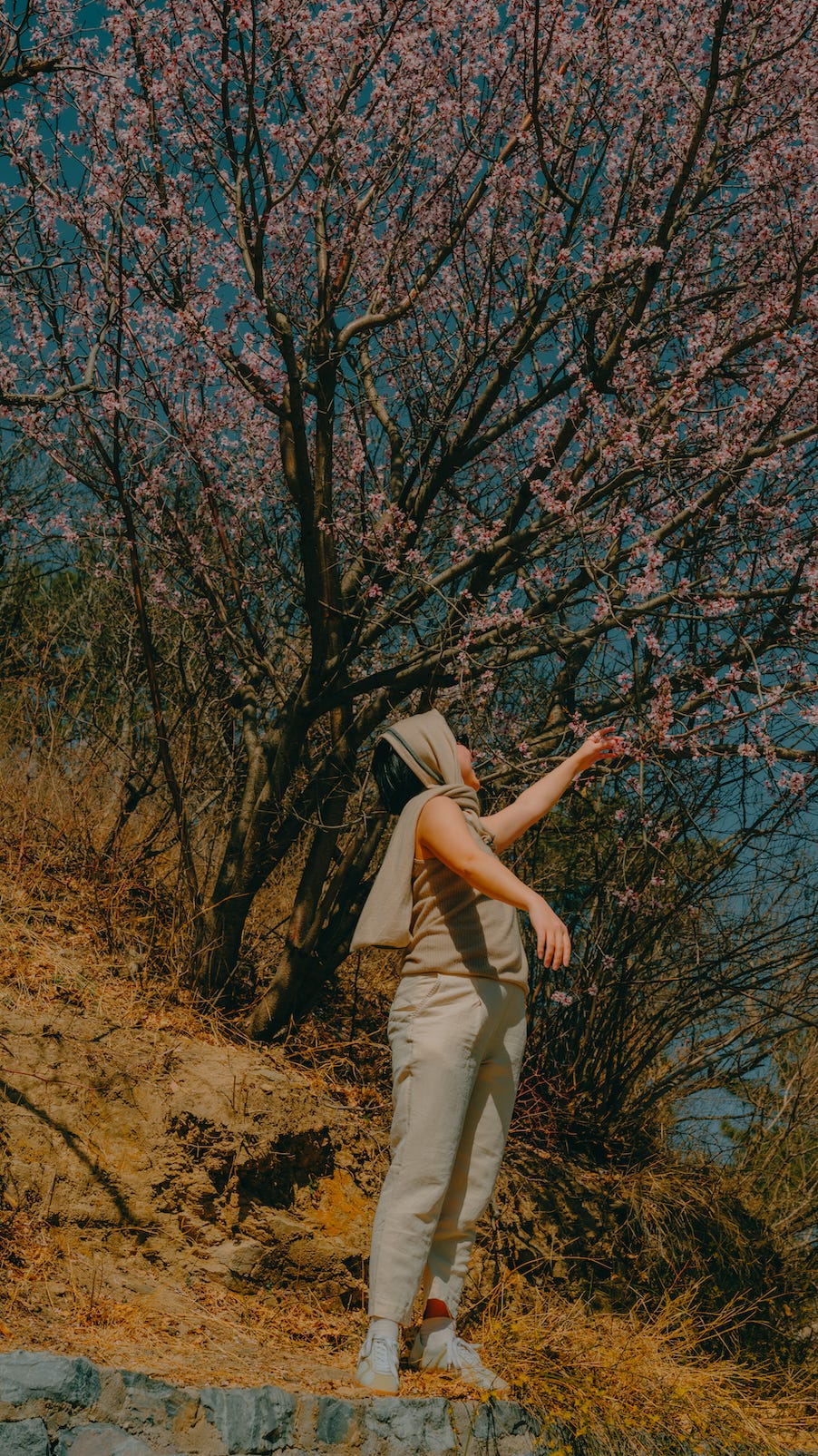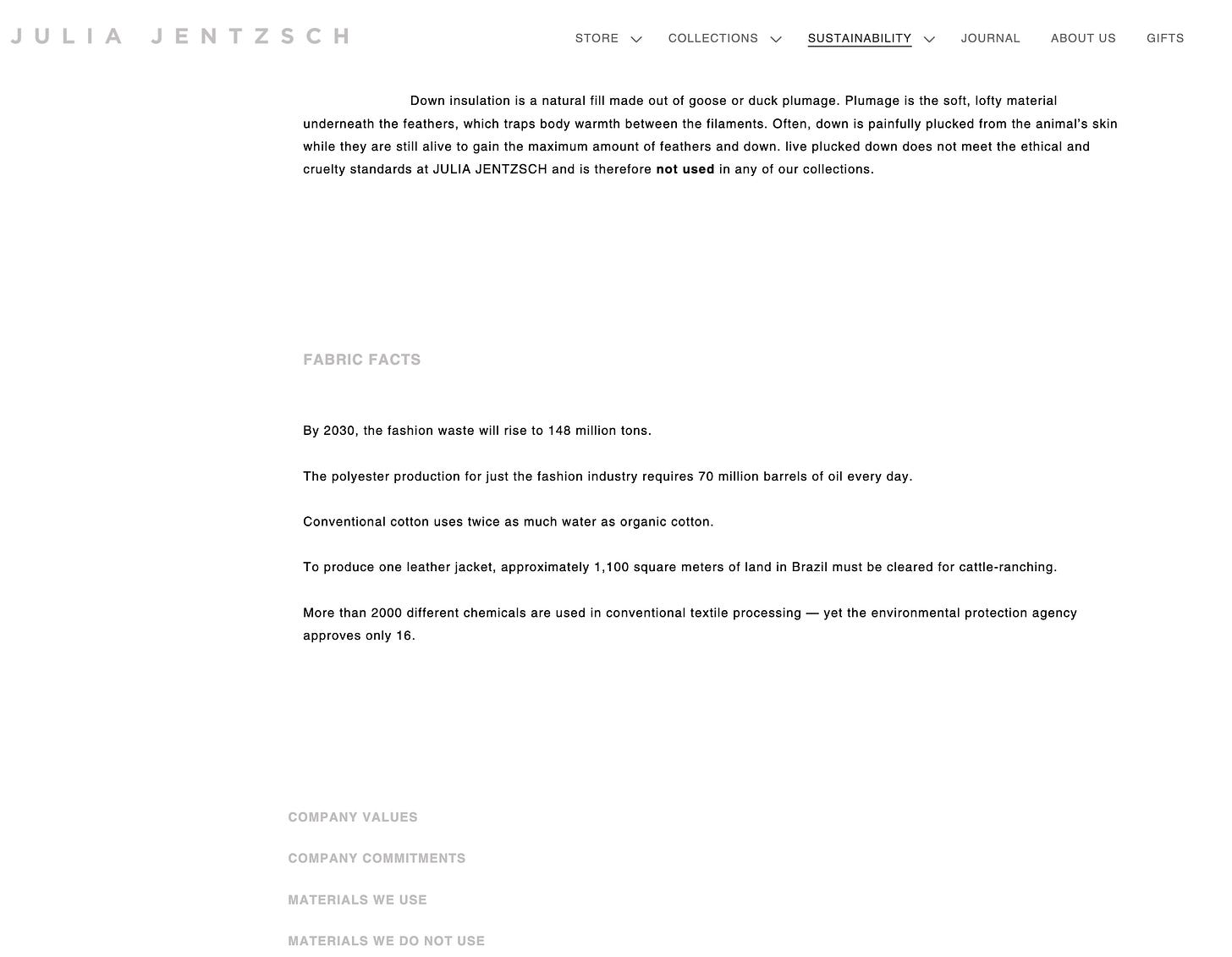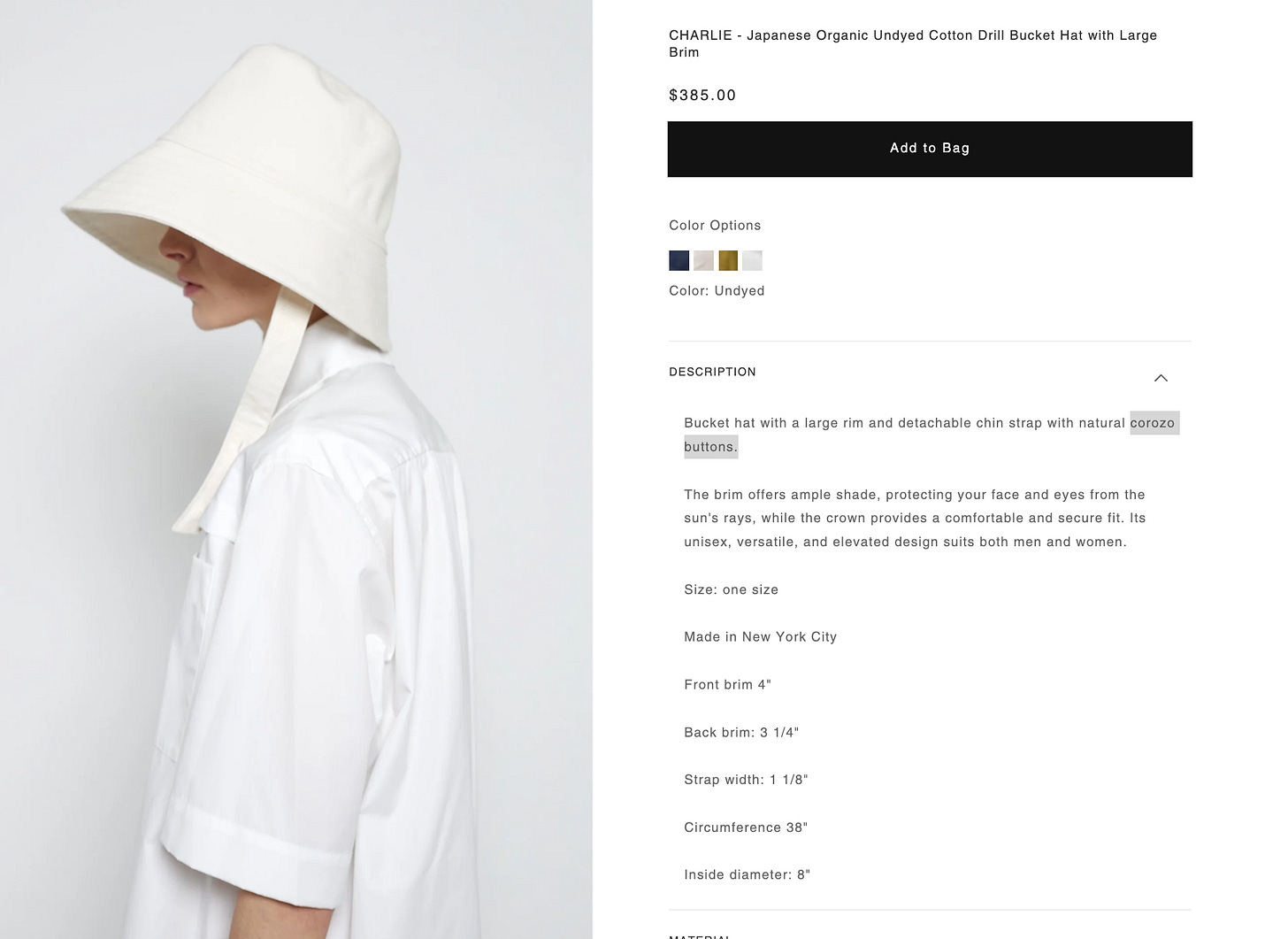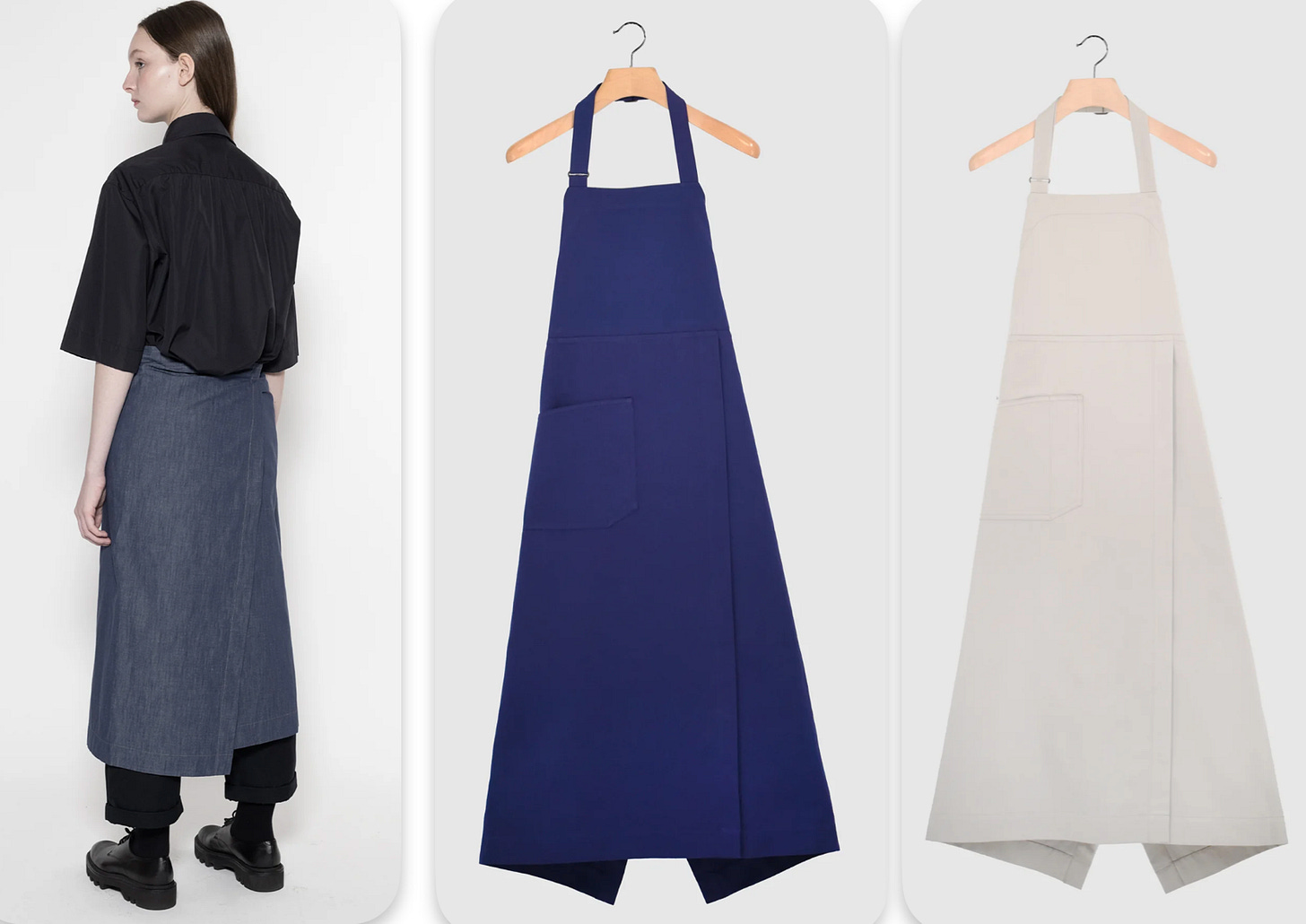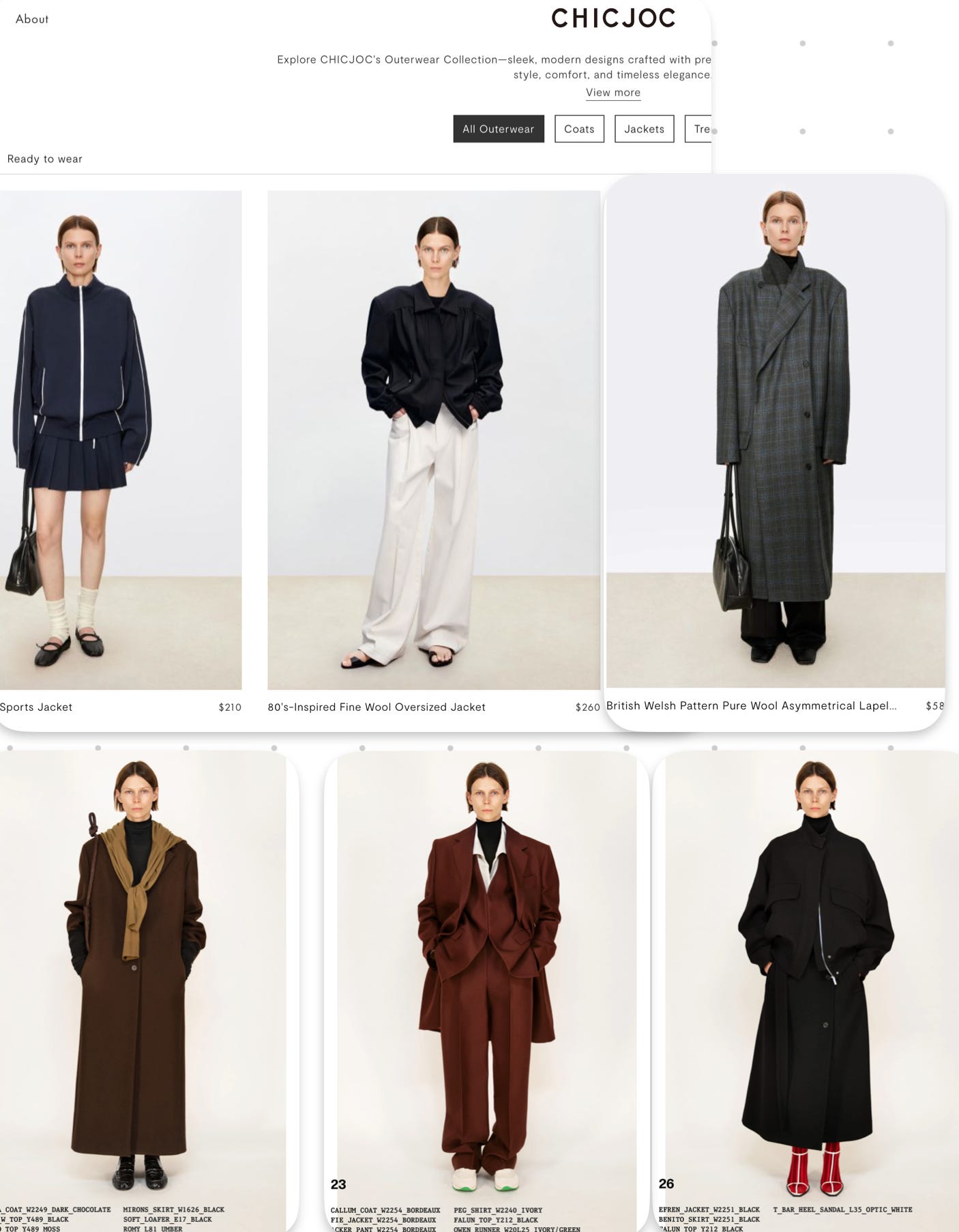Julia Jentzsch | Sustainable Fabrics Meets New York Minimalism Design
Summer is coming, and this month I'll focus on organizing American quiet luxury designer brands. American brands are mainly distributed in New York and Los Angeles, with New York positioning being more expensive. I've previously written about New York's Khaite,Gabriela Hearst , Maria McManus, California LA's Cult Gaia, Santa Barbara's Doen,Hollywood's CO
Recently after reading CFDA's 60th anniversary PDF, I looked up the New York brands mentioned one by one, and found that few have good fabrics, most are no longer operating well, and many are barely surviving through celebrity circles.
CFDA's analysis of the 2010s emphasizes "Made in US" manufacturing in New York and LA. Therefore, these American designer brands established between 2000s-2020s, besides producing in Peru, India, Portugal, and China, also manufacture some ready-to-wear items in New York or Los Angeles.
Interestingly, even for "Made in US" products, many Chinese people are involved in textile production. The CFDA report recommends finding small workshops where a few workers can produce in small quantities. This small-scale production model is very suitable for those emerging New York designers with limited market demand.
The designer brand Julia Jentzsch featured in this article collaborates with local small family businesses in New York. For example, the brand's sweaters are hand-knitted by New York craftsmen, and recycled fabrics are woven at a handloom factory in Brooklyn. However, Julia Jentzsch clothing is also made in Madagascar (such a niche location, first time hearing about "Made in Madagascar," possibly another factory opened by Chinese entrepreneurs). The specific origins are all marked on the official website.
In addition to wanting more manufacturing in America, another feature of this era is the increased focus on environmental protection and sustainability, with emphasis on GOTS certification. The American approach to environmental protection and sustainability involves recycling various fabrics, not just common organic cotton and recycled cashmere. These environmentally friendly designer brands in New York even use recycled nylon and polyester fibers. The previously problematic Osprey backpack was made from 100% recycled nylon, and Maria McManus also uses some recycled nylon for stockings and leggings.
The more pragmatic approach to environmental protection and sustainability in countries with manufacturing foundations like Italy, Germany, and England involves building solar power plants, hydroelectric plants, using plant dyes, only using natural fabrics, wastewater treatment, and establishing nature reserves; France focuses on handmade production.
Both approaches value long-term brand development, traceability, and animal welfare. Italy, with its many factories, can monitor the entire supply chain. The United States, only responsible for design, may choose to cooperate with or supervise partners that value animal and labor welfare when selecting fabrics and factories. America has organizations like PETA and left-wing environmentalists who, for example, ban all fur and leather products, which can sometimes be too idealistic.
01
New York designer Julia Jentzsch was born in France, grew up in Germany, and studied fashion design in Hamburg. She later moved to London to work for John Galliano, then completed a master's degree in fashion design at the Royal College of Art. Her graduation collection caught the attention of British Vogue's editor and was featured in the December issue that year. For 15 years, Julia worked at top international design companies, collaborating with many design masters including Jil Sander in Hamburg, Alber Elbaz at Yves Saint Laurent, Tom Ford, Stefano Pilati, and Calvin Klein. Later, she also served as a consultant for brands like Vera Wang and J. Mendel.
Julia Jentzsch's rich background gives her more celebrity connections, allowing her to enter the CFDA association as a mid-range designer brand.
Julia Jentzsch founded her eponymous brand in 2007, initially as a consulting design company, later transitioning to producing high-end womenswear. Her design philosophy continues the German modernist movement from the early 20th century, emphasizing the combination of form, function, and aesthetics, pursuing timeless and modern clothing, focusing on long-term wearability, and advocating for a more streamlined, durable wardrobe.
Since 2020, Julia Jentzsch began implementing a "recycle, reuse, repair" strategy. Unused garment fabrics are either made into home goods or recycled into yarn, reducing waste in the production process. Some styles are produced on a pre-order basis to avoid overproduction. If fabrics from the previous season are not used up, they continue using them in the new season.
Julia Jentzsch began teaching at Parsons the New School of Design in 2022.
purity, simplicity and longevity are important values to us. reuse, repurpose, recycle, and repair are processes we began using in 2020.
The brand uses circular sustainable and biodegradable materials, organic cotton, recycled polyester, plant-based nylon, linen, etc., pursuing global organic textile standard (g.o.t.s.)
Among these, "aloe vera treated linen" is an innovative textile that applies aloe vera extract to linen fabric, reducing wrinkles in linen and increasing comfort. Besides Julia Jentzsch, Gabriela Hearst also uses this fabric. Both are CFDA association members, but Julia Jentzsch's positioning, design level, style, and fabric use are more similar to Maria McManus, belonging to the mid-range mass market. Her design and pattern-making still need improvement; I even think Julia Jentzsch's fabric designs and patterns are not as good as Maria McManus, which is evident just by looking at their trench coat categories.
Julia Jentzsch's official website has a special introduction to the fabrics the brand uses and won't use, such as Italian RE.VERSO™ recycled cashmere, Todd & Duncan sustainable undyed cashmere, and ZQ wool that complies with environmentally sustainable production organizations.
Julia Jentzsch uses wool that has not undergone Mulesing surgery and rejects fur, thus has no leather or fur products.
Mulesing is a surgery adopted by the Australian livestock industry in the 1930s, where shepherds use wool scissors to cut away the folded skin around sheep's anuses to prevent "flystrike" disease.
I mentioned Julia Jentzsch has celebrity attributes, which can be seen through the brand's channel stores in various American cities, concentrated in the Great Lakes region. Many immigrants from Germany and France generally settle in this area, with higher cultural literacy and more of an American understated old money style.
02
Julia Jentzsch offers several styles for each clothing category, but not too many. The main categories on the official website are ranked as Essential, Accessories, Coats/Jackets, and Hand Knits. Let me organize the main items in order.
Essential
Julia Jentzsch's core series consists of two 12gg lightweight Oversize V-neck cashmere sweaters and cardigans, with a loose fit and basic design.
12gg (12 Gauge) is a knitting density marker. 12gg means 12 needles per inch, which is medium-fine density, suitable for spring, autumn, and even winter layering. 3gg is thick knitting for heavy sweaters, while 7gg is medium thickness.
Todd&Duncan is quite popular. As mentioned in Barrie , it was acquired by Ningbo Xinao Shares, and later Barrie purchased part of the equity for their own fancy yarn cashmere production. This piece by Julia Jentzsch uses Todd&Duncan's new environmentally friendly undyed cashmere. The water resources in the production process are recycled, and the lubricants used are GOTS certified.
The product description shows that the cashmere is sourced from Ningxia. In 2023, Ningxia Zhongyin Cashmere Co., Ltd.'s cashmere yarn division was also acquired by Xinao Shares, establishing Ningxia Xinao Cashmere Co., Ltd.
You can see that with these American designer brands, because production and design are decoupled, they focus on describing the fabric characteristics of their supply chain. Xinao obtains cashmere in Ningxia, Todd&Duncan spins yarn in Loch Leaven, Scotland, and the final garment manufacturing is in Madagascar, Africa. Previously, I learned that some Chinese cashmere brands (like Luking) have started building factories in Africa and Madagascar.
The YARA piece comes in 5 colors, mainly in natural cashmere colors.
This cardigan is also the same 12gg thickness, but production is in New York.
It's also available in gray and white.
The basic classic items also include a regular 100% cotton sweatshirt, which I won't introduce here as the fit is very ordinary.
While on the topic of knitwear, let me cover the Handknit section. There's only one sweater, hand-knitted in New York. The fabric is 68% baby Alpaca, 10% merino wool, and 22% polyester.
Accessories
Accessories include 100% wool shawls, fisherman hats in various fabrics, and aprons in 82% linen blend with 12% cotton. These might be the brand's flagship items, and since accessories are easier to design and manufacture, all three categories are made in New York.
The cape's fabric is Loro Piana's double-sided wool fabric, Made in NY.
Bucket hats come in 100% wool, 100% Japanese organic cotton, or 60% cotton with 40% hemp or linen blend fabrics. The chin support bag can be removed. The buttons are Corozo buttons, made from the seeds of the South American ivory palm tree (Tagua palm), which I've already introduced in Maria McManus. Both brands frequently use corozo buttons.
Personally, I don't particularly recommend summer hats as they're not very practical. In summer, it's easy to sweat, and unless you're at a summer resort, it's better to stay in air-conditioned places. Winter cashmere beanies and balaclavas are more practical.
This is the first time I've seen a brand specifically design aprons in 5 colors, in linen and cotton blend.
This apron design is like those used in Western art workshops for painting and sculpting, not the Chinese-style apron with a pocket in the middle.
Coats
Julia Jentzsch offers two wool coats with gun flaps that have a trench coat style, but mainly focuses on trench coats. After all, trench coats have lower requirements for pattern design than coats. With Maria McManus, I also thought the trench coats looked better, and that brand also features trench coats prominently, constantly upgrading and fine-tuning them each season.
Julia Jentzsch's trench coats have a somewhat outdoor feel because they incorporate nylon fabrics.
Like this piece which is 80% cotton and 20% recycled nylon:
There are also trench coats made of 100% nylon:
And one that's 80% cotton blended with 20% recycled polyester. It has a worn-out look:
Julia Jentzsch's better quality trench coats are cotton blended with silk or wool:
The most expensive is this 76% wool and 24% cotton blend trench coat, which looks more formal, with higher quality fabric and cleaner lines:
In the coat category, there's a special undyed 100% cotton wooly coat. The description on the right contains excessive content about the fabric, almost like Chinese export brand ChicJoc, which is all about introducing their fabrics. While writing about Julia Jentzsch, I indeed feel that this brand is somewhat like a new generation marketing designer brand.
Jacket
Julia Jentzsch's suit patterns are very ordinary, lacking clean and concise lines. It's evident that Julia Jentzsch's design and pattern-making skills are average, which explains why the Essential series consists of ordinary basic cashmere sweaters.
The blue and black jacket below is designed quite well. 100% wool with 100% Bemberg cupro silk lining.
This is the first time I've seen a women's pilot jacket; most clothing brands only offer pilot jackets in menswear.
Epilogue
Overall, Julia Jentzsch, with her experience as a brand information consultant (working as a fashion brand information company before designing clothes), excels at using fabric promotion and environmental concept promotion to increase brand awareness. This reminds me of the Chinese brand Chicjoc that has expanded internationally in the past 1-2 years, which also relies on extensive fabric promotion.
However, Julia Jentzsch's fabrics aren't particularly solid, with recycled nylon, polyester, etc., but her ordinary jackets, shawls, cashmere sweaters, and trench coats are designed quite well. She still has her own design style and level of expertise, after all, she's been designing clothes and working in the fashion industry for a long time. Although Julia Jentzsch has been releasing new styles these past 2 years, development seems quiet, and she hasn't collaborated with major e-commerce platforms. The brand belongs to a small, niche circle without expanding outward for publicity.
Meanwhile, I've discovered that Chicjoc's official website models in 2025 are the same as The Row's womenswear models from 2022, and many of their clothes copy Miu Miu and The Row.
Chicjoc has copied The Row's square silhouette and clavicle shoulder line with a twist that only matured in the last two or three years, but their versions look more awkward and cheap compared to The Row.
I wonder if it's because I wrote about The Row's Lookbook, but now The Row's official website has more detailed lookbooks for each season, making it easier to see the styling. Previously, lookbooks for some seasons were missing. Additionally, The Row has also started a Chinese official website this year. I hadn't seen it in March, but now it's available(slightly unstable)
The styling design, photography, and models for the new 2025 season seem somewhat unusual, with a dark, depressing, blurry style.
pamperherself






